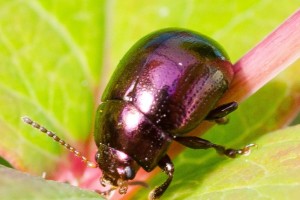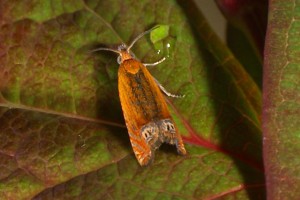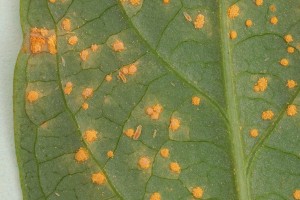Tutsan
Project overview
The tutsan biocontrol project was initiated by a group of concerned farmers in the Ruapehu District who formed the Tutsan Action Group. Tutsan is a European plant which was introduced for ornamental purposes. It is attacked in New Zealand by a self-introduced rust fungus (Melampsora hypericorum). The rust arrived here during the 1950s causing significant damage to tutsan infestations. However, by the 1990s tutsan was invading many farms in the North Island as it had become resistant to the disease. The rust appears to still be keeping plants in the South Island under control – they are a different genotype which has remained susceptible. New Zealand has four genotypes of tutsan, two of which are rare, and two genotypes of the rust.
Additional agents to control tutsan have been sought in Europe. As a result, the tutsan beetle (Chrysolina abchasica) and the tutsan moth (Lathronympha strigana) were found and approved for release here in 2016. Releases of both insects began in 2017 with establishment yet to be confirmed. The adults and the larvae of the beetle feed on the leaves. The moth larvae feed on the shoot tips and inside stems, reducing plant growth, but mostly feed inside the fruits destroying the seeds. It is hoped these two insects will be able to provide better control tutsan in the North Island in the future.
Newsletter articles
- pdf Three new agents approved for two weeds - Issue 77, p.6 pdf File, 850 KB
- pdf Tutsan agents imminent - Issue 74, p.5 pdf File, 6.6 MB
- pdf Tutsan project moves towards phase two - Issue 66, p.5 pdf File, 855 KB
- pdf International effort underway against tutsan - Issue 61, p.8 pdf File, 1.1 MB
- pdf Feasibility of tutsan biocontrol - Issue 49, p.2 pdf File, 1.8 MB
- pdf Tussling with tutsan - Issue 45, p.3 pdf File, 711 KB
Key contact





